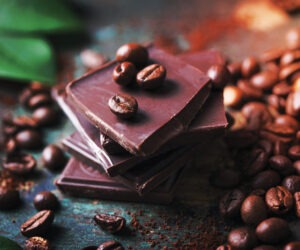Using Munich & Vienna malts: Tips from the Pros
Munich and Vienna malts are similar in many ways. Munich is widely considered a malt that can substitute for traditional pale malt. Professional brewers, however, would advise its use in moderation, as its enzymatic power is low. Munich works well for bringing a deep orange color and a malty, grainy flavor to your brew. Vienna malt, by contrast, has all the characteristics of a base malt, including enzymatic power. It offers less orange-tinted color, but plenty of the grainy characteristics of Munich malt. Either malt can be used in a variety of beer styles.
Brewer: Mike Hoops, Minneapolis Town Hall Brewery in Minneapolis, MN
I have been guilty of the ever-popular “kitchen sink” brew. You know, the one where you clean out your brewing closet and it all goes into the pot. You can certainly learn a lot about combining ingredients this way, but it is probably better to learn the characteristics of your individual ingredients first. Vienna and Munich malts share some similarities, but — if we look at them a bit closer — we discover they are quite different.
Let’s look first at their similarities. Munich and Vienna are both similar to pale malt, although they are produced using higher kilning temperatures. This results in malt that has a higher color rating, increased aromatic quality and rich body enhancers. They are both capable of being the primary base malt in beer, but that’s about where the similarities end.
Munich malt has a color rating of 5–20 degrees Lovibond (°L), depending upon its origin. For comparison, English 2-row malt is rated at about 3 °L. The higher-rated Munich offers rich orange hues in finished beer, which can be good for amber or darker beers, like Märzens or Oktoberfests.
The flavor Munich offers tends to be a deep, malty, grainy flavor that may also be described as slightly toasty in some cases. Munich malt can be used as a primary malt, but — because of its low diastatic power — it’s not really recommended. Munich malt has a lower enzyme concentration and cannot be relied on to convert starch from enzyme-deficient adjuncts and special malts.
Vienna malt, conversely, has a very high diastatic power and works well as a base malt. Although it is also kilned at higher temperatures, Vienna malt is not subjected to the heat as long, which enables the activity of the enzymes to be high and strong.
Vienna malt offers a grainy, malty flavor, but is much less pronounced than that of Munich malt. It has a color rating of 3–5 °L, making it comparable to English pale malt. It works very well with the heavily-hopped beers because it adds a great degree of malt character without overshadowing the highlighted hops. Due to its light color offering, Vienna is a versatile malt. You can sneak 25% into a Bohemian-style Pilsner for additional malt chewiness or use 90% in an amber. I often use it as a partner to pale ale malt, in small percentages (3–5%), just for a bit more richness in the malt profile. I think that Vienna has a place in many more beer styles than you may have first thought.
Brewer: Penny Pickart, Briess Malting Company in Chilton, WI
The main difference between Vienna and Munich malts is that Vienna malt can be used as a base malt but Munich, for the most part, can’t.
Vienna malt has all the chemical make-up of a base malt. Its diastatic power, the amount of enzymatic starch conversion potential, is about 120–140. (Two-row pale malt, by comparison, is rated at 110–130 and 6-row pale malt rates 130–150). The alpha amalyse (the enzymes used to break down the starches into sugars) levels measure between 40–45 (two-row pale malt is 43–48; six-row is 42–46).
Munich, by contrast, has far lower enzyme levels because of the additional heat used during the malting process. If Munich malt gets around the 10 °L level, it doesn’t have enough enzymes to serve as a base malt. You start finding diastatic power around the 45–55 level and an alpha amalyse level around 20–35. Lighter Munich malt can be used to a greater percentage because there’s enough diastatic power to compensate for less base malt. Dark Munich, however, is so limited in diastatic power as to relegate it to the category of a specialty malt.
When it comes to the flavor difference between Vienna and Munich, remember that Vienna is sweet and has a mild maltiness. Color averages between 3-4 °L. There’s also a slight graininess that comes through in the beer. Munich malt is rich, malty, biscuit-like and intense. Color ranges between 8-25 °L.
For Briess, Vienna malts and Munich rated from 10–20 °L are made from six-row malts. Bonlander Munich and Aromatic — a Munich malt that contributes intense malt flavor and aromas — are two-row, and they also have enough diastatic power and alpha amalyse to serve as base malts. As for the difference between two-row and six-row malts, Munich six-row malts have a more grainy character while two-row Munich malts are smoother and sweeter.
Here are some guidelines. Use 10–30% Vienna malt with Pilsner beer to add color and malty flavor. Use 60–90% Vienna malt for light-colored amber beers, together with caramel malt. Use 70–80% Vienna malt for medium-colored amber beer, along with caramel malt.
For standard Munich (10 °L), use 10–30% of the grist for dark beers and bocks, 5–15% for ambers and Märzens, 3–7% for pale beers and Canadian lagers, and 2–5% in low gravity brews.
The production methods of Munich and Vienna malts are similar, except that Munich malt is kilned longer.


